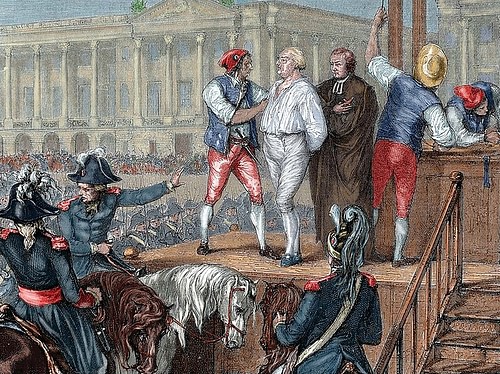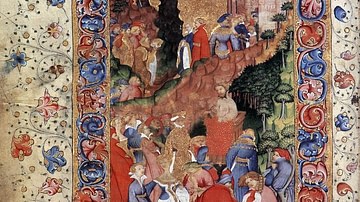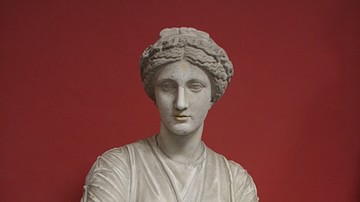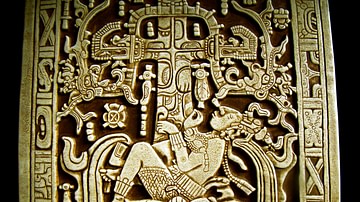The trial and execution of King Louis XVI of France (r. 1774-1792) was one of the most impactful events of the French Revolution (1789-99). In December 1792, the former king, now referred to as Citizen Louis Capet, was tried and found guilty of numerous crimes that amounted to high treason, and he was sentenced to death by guillotine.
Louis' execution would profoundly affect the course of European history, marking a point of no return for the French revolutionaries. The first and only execution of a French king by his subjects, the death of Louis XVI marked the death of the Ancien Régime and ended a millennium of uninterrupted French monarchy. It greatly expanded the French Revolutionary Wars (1792-1802), led to the Reign of Terror, and began the short-lived period of the First French Republic (1792-1804).
Royal Prisoners
By September 1792, the French Revolution had completely transformed French society; the feudal regime had been demolished, the powers of the Church and aristocracy curtailed, and the natural rights of man affirmed. The Constitution of 1791 had been crafted for a new, egalitarian society, in which there were neither patricians nor peasants, neither masters nor slaves, only citizens, and on 21 September 1792, the monarchy was abolished and a French Republic proclaimed.
By that point, Louis XVI had already been overthrown and was being kept prisoner by Paris' city government, the Insurrectionary Commune, in the fortress of the Temple. Since 1789, multiple attempts to reconcile him with the Revolution had failed, culminating in the bloody Storming of the Tuileries Palace on 10 August 1792. The last straw had been the king's apparent disregard of the city’s defense in the face of an encroaching Prussian army, leading frustrated, scared, and enraged citizens to invade his palace. Although Louis had left a note ordering his Swiss Guard to surrender, they disregarded the order and fired on the insurrectionists; after the ensuing battle, 800 people were dead. Many blamed the king, who was arrested; France's thousand-year-old monarchy was finally dead.
The royal prisoners of the Temple included Louis XVI, his wife Marie Antoinette, his two children, and his sister Madame Elizabeth. They were allowed certain comforts, including a staff of 13 servants, a valet, professionally cooked meals, and however many books the king desired. Yet, the Commune did not hesitate to remind the royal family that they were royal no more; visitors did not remove their hats in Louis' presence, nor did they rise from their seats to bow before him. The prisoners were showered with verbal abuse from their guards, who amused themselves by drawing graffiti depicting Louis hanging from a gallows.

Louis was shadowed by National Guardsmen everywhere he went, even during his solitary reading sessions. The guards confiscated Marie Antoinette's sewing kits, suspicious she was stitching secret messages. Still, Louis and his family attempted to live as normally as they could. They took their meals together, and although they were required to converse loudly and clearly in French, Louis was allowed to give geography lessons to his son, Louis-Charles, and the two could often be found coloring maps together. Around midday, the family was allowed in the gardens, where they would toss balls or play shuttlecock, and in the evenings, Louis would read Roman histories to his children. But as the family settled into their new lives, a new legislative body was gathering in Paris, with one important matter to decide: what should become of France's former king?
To Condemn a King
In early September, 749 deputies were elected to the new National Convention. Like the Legislative Assembly that preceded it, the Convention was overwhelmingly young, with two-thirds of its members under 45, most of whom were lawyers. Many of these new deputies were already prominent revolutionary leaders, including Maximilien Robespierre, Jacques-Pierre Brissot, and Georges Danton. Others, like the 25-year-old Louis-Antoine Saint-Just were newcomers, and for the first time, a foreigner was even elected; radical Englishman Thomas Paine was given a seat, despite his poor French.
The Convention began its tenure with a bang, declaring a French Republic on 21 September 1792. The monarchy was officially abolished, effectually legitimizing the actions taken on 10 August. Yet the question of the king's fate remained a difficult one and would occupy the Convention's attention for the rest of autumn. The Girondin faction, led by Brissot, proposed doing nothing; the king would be most valuable as a prisoner and hostage, where he could still be utilized as a political pawn should the need ever arise. The Girondins' opponents, however, scorned this proposal, demanding that Louis be further punished; the most militant of these were a subset of Jacobins, who came to be known as the Mountain, due to their tendency to sit at the top of the bleachers during Convention meetings. Led by Robespierre, the Mountaineers believed Louis should be put to death.
As the Girondins and Mountaineers bickered, other deputies raised procedural issues, debating exactly how and in what manner a king could be tried, or even if he could be tried at all. Charles Morisson, deputy from the Vendee department, stated that Louis could not legitimately be tried, since the Constitution of 1791 held that the king's person was "inviolable and sacred" (Scurr, 242). According to the constitution, abdication was sufficient punishment for his crimes. Morisson's logic was derided by his colleagues, who argued that the king had never truly accepted the constitution and could not be protected by it. Surprisingly, the Mountaineers agreed with Morisson that there should be no trial, albeit for wildly different reasons.
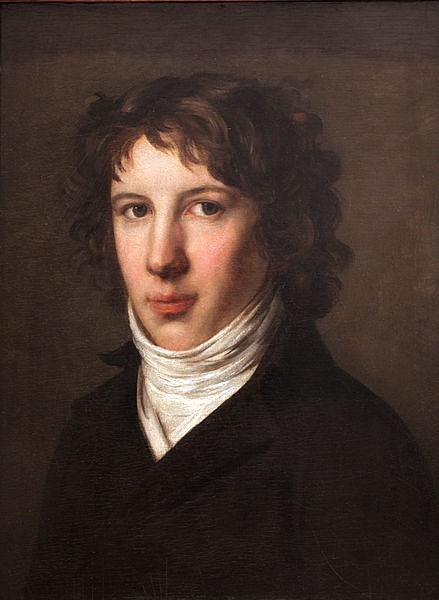
The Mountain's spokesman was the young Saint-Just. With a practiced stoicism reminiscent of his idol Robespierre, Saint-Just argued that the king had already been found guilty, both by the people on 10 August and by the mere virtue of having been a monarch, since "no one can reign innocently" (Davidson, 138). Saint-Just declared that the king had never been a true citizen of France; as king, he held himself above the law and had never partaken in the democratic process. Why should he be considered a citizen now? According to Saint-Just, the king was outside the body politic, no more deserving of protection under French law than a foreign prisoner of war. "For myself," Saint-Just concluded, "I can see no middle ground: this man must reign or die" (Scurr, 243).
Saint-Just's electrifying speech impressed no one as much as Robespierre; their subsequent friendship would have profound consequences for France. In the meantime, the Jacobin leader gave a speech concurring with the young deputy, proclaiming that a trial would necessitate entertaining the possibility of Louis XVI's innocence, something that could not be allowed. If Louis could conceivably be innocent, he reasoned, then the Republic had been built on false pretense; as he put it, "Louis must die because the nation must live" (Scurr, 245).
Despite the Mountain's powerful rhetoric, the Convention was in the end an assembly of lawyers, and as such was intent on doing things legally. There would be a trial. With this decision, two committees were established to search for specific crimes with which to charge the king.
Indictment
On 20 November, it was announced that an iron chest had been discovered in a hidden compartment in the Tuileries' walls. Within were letters and documents that incriminated the king of anti-revolutionary and treasonous behavior. Most shocking to the Convention were letters that revealed the late revolutionary leader Honoré-Gabriel Riqueti, comte de Mirabeau, to have been secretly working for the king. At Robespierre's insistence, Mirabeau's remains were removed from the French Pantheon, his bust in the Jacobin Club smashed to pieces.
Although the chest's discovery sparked a bitter debate in the Convention over whether the documents were doctored, it was enough on which to base proceedings. On behalf of the criminal committee, Robert Lindet presented a list detailing the king's crimes stretching back to the beginning of the Revolution. Such crimes included but were not limited to preparing to use military force against Paris in the days leading up to the Storming of the Bastille; conspiring to flee France and instigate counter-revolution in the Flight to Varennes; allowing the blood of Frenchmen to be spilled in both the Champ de Mars Massacre and the Insurrection of 10 August. With the charges prepared, the Convention summoned Louis to appear before them to be indicted on 11 December.
On the morning of the indictment, Mayor Chambon of Paris went to the Temple to collect the king, who he addressed as Louis Capet. This inspired an uncharacteristic outburst from the former monarch who shouted, "I am not Louis Capet! My ancestors had that name, but I have never been called that," (Schama, 658). Escorted before the deputies, Louis was made to stand until the Convention's president, Bertrand Barère, invited him to sit. For the next three hours, Barère went through the list of charges, all of which Louis flatly denied, even when documents were presented to him that clearly bore his signatures. Throughout it all, he maintained an impressive degree of calmness, a mask that only fell once; when accused of "shedding French blood", Louis became flustered, wiping tears from his eyes, and rubbing his forehead. Overall, he remained defiant, maintaining that he had done only what he believed to be right. After his indictment, he requested defending counsel, something that the Convention reluctantly agreed to. They adjourned for ten days to give Louis' team time to prepare.
In the meantime, Paris rejoiced at the news of a trial. An account of the trial and execution of King Charles I of England (r. 1625-1649)became a bestseller in bookstores, as political clubs toasted the impending death of a tyrant. Yet, although Paris thirsted for royal blood, by no means did all of France feel the same. Indeed, the king's trial and possible execution disturbed much of the army as well as large swathes of the countryside. In Rouen, a riot broke out on the king's behalf. It was another example of the rifts between French citizens that would help tear the nation apart in the coming year of Terror.
The Trial
Louis' team immediately went to work preparing his defense. His lead counsel was Lamoignon de Malesherbes, a 71-year-old statesman who had twice served as royal minister; when asked what had compelled him to fight this losing battle, Malesherbes replied, "I was called twice to the service of him who was my Master, when all the world coveted that honor; and I owe him the same service now when it has become one which many reckon dangerous" (Carlyle, 545). Louis' other defenders included another senior jurist, François-Denis Tronchet, as well as the younger and more eloquent Romain Desèze.
Louis retained the final say over his legal arguments and approved all his counselors' speeches. He refused to allow them to claim that he was ignorant of the law, nor would he follow the example of Charles I and deny the authority of the Convention. Instead, he would refer to the Constitution of 1791, which held France's monarch as inviolable, thus making a trial illegal. Although Louis had told Malesherbes that he believed their case was winnable, it appeared that he had secretly come to accept his situation, as he spent Christmas Day revising his last will and testament. In it, he wrote to his son that should he ever have the misfortune of becoming king, he should not seek revenge for his father's death but should seek only the happiness of his subjects. He wrote the queen asking for forgiveness for any grief he may have caused her during their marriage. In a final act of defiance, he signed the will "King Louis XVI of France and Navarre," the title he had held under the Ancien Régime.
On 26 December, Citizen Capet was brought to the Convention for his trial. Desèze, who had not slept for four days, presented the defense's arguments. He made the case that under the Constitution of 1791, the king had already paid for his crimes with his abdication and had committed no further crimes since becoming a citizen. According to Desèze, the king had only ever acted in the interests of his people, reminding the gathered citizens that the king had "given" them their liberty. On the topic of bloodshed, Desèze claimed that the king had never meant for it to happen, though "he will never forgive himself because of this" (Schama, 660).
Following Desèze's arguments, three questions were laid before the Convention:
- the question of guilt
- whether Louis had the right to appeal
- the matter of sentencing
On 15 January 1793, the guilty verdict was rendered by 693 votes; although some deputies abstained, not a single vote for innocent was cast. The question of appeal was closer, although it was ultimately defeated 424 to 283. That, of course, left only the sentencing. A request by the Girondins to implement a two-thirds majority ruling for the sentencing was denied, as every other important decision had required only a simple majority.
Voting for the sentence began at 8 in the evening on 16 January and would last for 13 hours. One by one the deputies approached the tribune to state their vote and their reasoning. The hall was packed with spectators, enthralled by the dramatic event. Of all the votes cast, perhaps the most surprising was by Philippe Égalité, the king's cousin and former Duke of Orléans. Égalité voted for execution, on the grounds that, "those who have attacked the sovereignty of the people deserve death" (Fraser, 398). Égalité's vote was seen as opportunistic and dishonorable even by those who supported Louis' execution and was the only vote that visibly enraged the former king when he was told.
In the end, the vote for execution carried. 361 voted unconditionally for death, 319 for imprisonment followed by banishment, and the rest for some variation of the two. Louis' exhausted defense counsel, who had been denied seating for the entirety of the vote, read out a prepared statement from the king, in which he refused to accept judgment for crimes he did not believe he committed. Malesherbes attempted one final plea but was so overcome with emotion that the words became lodged in his throat. "Citizens," he said through tears, "I have observations to make to you…will I have the misfortune of losing them if you do not allow me to present them tomorrow?" (Schama, 663). He indeed was to suffer such a misfortune. The matter was decided.
Execution
In the intervening days between sentencing and execution, others tried to save Louis from his fate. Thomas Paine suggested sending Louis Capet to Philadelphia, where he could be rehabilitated as a dutiful citizen. Marquis de Condorcet gave a long-winded speech about the evils of capital punishment. The Girondins tried to pass a motion delaying the sentence. Even Louis himself asked for more time to get his affairs in order. None of these pleas had much effect, and Louis was condemned to die on 21 January 1793.
On the evening of 20 January, Louis was allowed to see his family for a final time. It turned out no one had yet informed them of his fate. The royal valet, Cléry, describes a heart-rending scene in which Louis' wailing children clung to his legs, and the former king wept as he held them. When it came time to leave, Marie Antoinette tearfully asked him to stop by again in the morning. Louis agreed, although it was a promise he could not bring himself to keep. He would not see his family again.
On 21 January, Louis awoke at 5 am to receive final communion from his chosen confessor, the priest Edgeworth de Firmont. At 8, the National Guard came to fetch him but were clearly anxious from the weight of their responsibilities. Taking charge one final time, Louis stomped his foot on the ground and commanded, "Partons!" ("Let's go!"). He was then loaded in a carriage, which took two hours to reach the scaffold through the winter fog. It passed by shut-up shops and shuttered windows, closed on the order of the Convention. Fearful of a rescue attempt, the Convention also ordered the city gates closed. Soldiers lined the streets, and 1,500 National Guardsmen accompanied the carriage itself. Within, Louis occupied himself reading from a prayer book.
At 10 am, the procession arrived at the scaffold in the Place de la Revolution. Louis was led to the steps where the executioner, Charles-Henri Sanson awaited him. Louis, who had thus far retained his composure, was on the point of resisting when Sanson tried to bind his hands. He was only soothed by the words of Edgeworth, who reminded him of the suffering of Jesus Christ. Submitting to this indignity, his hair was shorn, and he was led up the steps to the guillotine.
On the scaffold, he attempted to address the 20,000 citizens gathered in the square: "I die innocent of all the crimes of which I have been charged. I pardon those who brought about my death, and I pray that the blood you are about to shed may never be required of France…" (Schama, 669). He tried to say more, but a sudden drum roll drowned his words. Louis was then strapped to a plank and pushed beneath the blade. After it fell, Sanson held the dripping head before the crowd. At 10:30, the city gates were opened, the soldiers dispersed, and life returned to normal.

